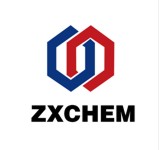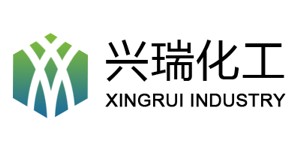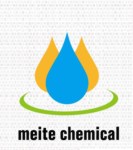|
Suppliers for CAS
77-58-7
|
Properties | | CAS |
77-58-7 | | Formula |
C32H64O4Sn | | EINECS |
201-039-8 |

|
|
34 Registered suppliers
Simagchem Corporation
P.R.China
Aecochem Corp.
P.R.China
Dayang Chem (Hangzhou) Co.,Ltd.
P.R.China
Sancai Industry Co.,Ltd.
P.R.China
| Appearance | Yellow to Colorless liquid
| | Sn% | ≥ 18.6±0.4%
| | Color(Pt-Co) | ≤ 100#
| | Volatile Matter | ≤ 0.50%
| | Density(g/ml at25°C(lit.)) | 1.05-1.07
| | Refractive index(n20/D) | 1.40-1.50
| | Standard | Enterprise standard
| | Content | 18.5%
| | Capacity | 500MT/month
| | Loading port | Shanghai
| | Use | Dibutyltin dilaurate is a kind of catalyst with strong gel properties.
| | Package | 25kg/drum,200kg/ drum or according to the customers’ demand
| | Storage | Stored in the dry and ventilated inside storeroom, prevent direct sunlight, slightly pile and put down |
Tianjin Zhongxin Chemtech Co., Ltd.
P.R.China
Product Name: Dibutyltin dilaurate
Synonyms: DI-N-BUTYLDILAURYLTIN;
DI-N-BUTYLTIN DILAURATE;
DIBUTYLBIS(LAUROYLOXY)STANNANE;
DIBUTYLBIS(LAUROYLOXY)TIN;
DIBUTYLTIN LAURATE
CAS: 77-58-7
Product Categories: Classes of Metal Compounds;Sn (Tin) Compounds;
Typical Metal Compounds;Organometallic Reagents;
Organotin;Organotins;organotin compound;
PU additive;Used for plastic heat stabilizer, organic silicon material treatment
Dibutyltin dilaurate Chemical Properties
mp 22-24°C
bp > 204°C/12mm
density 1.066 g/mL at 25 °C(lit.)
var pressure 0.2 mm Hg ( 160 °C)
refractive index n20/D 1.471(lit.)
Fp > 230 °F
Water Solubility <0.1 g/100 mL at 20 ºC
FreezingPoint 8℃
Safety Information
Hazard Codes T+,N
Risk Statements 22-26-36/38-50/53
Safety Statements 26-28-36/37-45-60-61
Dibutyltin dilaurate Usage And Synthesis
Chemical Properties yellow liquid
General Description Clear yellow viscous liquid.
Air & Water Reactions Dibutyltin dilaurate may be sensitive to air or heat. . Insoluble in water.
Reactivity Profile Dibutyltin dilaurate is strongly reactive with many other groups. Incompatible with acids and bases. Organometallics are good reducing agents and therefore incompatible with oxidizing agents.
Fire Hazard Dibutyltin dilaurate is combustible.
H&Z Industry Co.,Ltd
P.R.China
Product Name: Dibutyltin dilaurate
Synonyms: DI-N-BUTYLDILAURYLTIN;
DI-N-BUTYLTIN DILAURATE;
DIBUTYLBIS(LAUROYLOXY)STANNANE;
DIBUTYLBIS(LAUROYLOXY)TIN;
DIBUTYLTIN LAURATE
CAS: 77-58-7
Product Categories: Classes of Metal Compounds;Sn (Tin) Compounds;
Typical Metal Compounds;Organometallic Reagents;
Organotin;Organotins;organotin compound;
PU additive;Used for plastic heat stabilizer, organic silicon material treatment
Dibutyltin dilaurate Chemical Properties
mp 22-24°C
bp > 204°C/12mm
density 1.066 g/mL at 25 °C(lit.)
var pressure 0.2 mm Hg ( 160 °C)
refractive index n20/D 1.471(lit.)
Fp > 230 °F
Water Solubility <0.1 g/100 mL at 20 ºC
FreezingPoint 8℃
Safety Information
Hazard Codes T+,N
Risk Statements 22-26-36/38-50/53
Safety Statements 26-28-36/37-45-60-61
Dibutyltin dilaurate Usage And Synthesis
Chemical Properties yellow liquid
General Description Clear yellow viscous liquid.
Air & Water Reactions Dibutyltin dilaurate may be sensitive to air or heat. . Insoluble in water.
Reactivity Profile Dibutyltin dilaurate is strongly reactive with many other groups. Incompatible with acids and bases. Organometallics are good reducing agents and therefore incompatible with oxidizing agents.
Fire Hazard Dibutyltin dilaurate is combustible.
Xingrui Industry Co., Limited
P.R.China
Product Name: Dibutyltin dilaurate
Synonyms: DI-N-BUTYLDILAURYLTIN;
DI-N-BUTYLTIN DILAURATE;
DIBUTYLBIS(LAUROYLOXY)STANNANE;
DIBUTYLBIS(LAUROYLOXY)TIN;
DIBUTYLTIN LAURATE
CAS: 77-58-7
Product Categories: Classes of Metal Compounds;Sn (Tin) Compounds;
Typical Metal Compounds;Organometallic Reagents;
Organotin;Organotins;organotin compound;
PU additive;Used for plastic heat stabilizer, organic silicon material treatment
Dibutyltin dilaurate Chemical Properties
mp 22-24°C
bp > 204°C/12mm
density 1.066 g/mL at 25 °C(lit.)
var pressure 0.2 mm Hg ( 160 °C)
refractive index n20/D 1.471(lit.)
Fp > 230 °F
Water Solubility <0.1 g/100 mL at 20 ºC
FreezingPoint 8℃
Safety Information
Hazard Codes T+,N
Risk Statements 22-26-36/38-50/53
Safety Statements 26-28-36/37-45-60-61
Dibutyltin dilaurate Usage And Synthesis
Chemical Properties yellow liquid
General Description Clear yellow viscous liquid.
Air & Water Reactions Dibutyltin dilaurate may be sensitive to air or heat. . Insoluble in water.
Reactivity Profile Dibutyltin dilaurate is strongly reactive with many other groups. Incompatible with acids and bases. Organometallics are good reducing agents and therefore incompatible with oxidizing agents.
Fire Hazard Dibutyltin dilaurate is combustible.
Hangzhou Meite Industry Co., Ltd (Hangzhou Meite Chemical Co., Ltd)
P.R.China
Product Name: Dibutyltin dilaurate
Synonyms: DI-N-BUTYLDILAURYLTIN;
DI-N-BUTYLTIN DILAURATE;
DIBUTYLBIS(LAUROYLOXY)STANNANE;
DIBUTYLBIS(LAUROYLOXY)TIN;
DIBUTYLTIN LAURATE
CAS: 77-58-7
Product Categories: Classes of Metal Compounds;Sn (Tin) Compounds;
Typical Metal Compounds;Organometallic Reagents;
Organotin;Organotins;organotin compound;
PU additive;Used for plastic heat stabilizer, organic silicon material treatment
Dibutyltin dilaurate Chemical Properties
mp 22-24°C
bp > 204°C/12mm
density 1.066 g/mL at 25 °C(lit.)
var pressure 0.2 mm Hg ( 160 °C)
refractive index n20/D 1.471(lit.)
Fp > 230 °F
Water Solubility <0.1 g/100 mL at 20 ºC
FreezingPoint 8℃
Safety Information
Hazard Codes T+,N
Risk Statements 22-26-36/38-50/53
Safety Statements 26-28-36/37-45-60-61
Dibutyltin dilaurate Usage And Synthesis
Chemical Properties yellow liquid
General Description Clear yellow viscous liquid.
Air & Water Reactions Dibutyltin dilaurate may be sensitive to air or heat. . Insoluble in water.
Reactivity Profile Dibutyltin dilaurate is strongly reactive with many other groups. Incompatible with acids and bases. Organometallics are good reducing agents and therefore incompatible with oxidizing agents.
Fire Hazard Dibutyltin dilaurate is combustible.
Leap Chem Co., Ltd
P.R.China
Molecular Formula: C32H64O4Sn Molecular Weight: 631.56 Hazard Symbols: T+,N,C,T UN Number: UN 2922 8/PG 3 WGKGermany: 3 PackingGroup: III HS Code: 29319090
More details are to be found here
Cosutin Industrial Co., Limited
P.R.China
Together with dibutyltin dioctanoate, DBTDL is used as a catalyst for polyurethane production from isocyanates and diols. It is also useful as a catalyst for transesterification and for the room temperature vulcanization of silicones. It is also used as a stabilizer in PVC.
|
SPECIFICATIONS
| | Appearance | Colorless to pale yellow oil liquid
| | Tin Content | 18.50±0.50%
| | Chroma(Pt-Co) | ≤ 100#
| | Water | ≤ 0.50%
| Physical Parameters
| Basic Information of DBTDL
| | English Name | Dibutyltin dilaurate
| | CAS No. | 77-58-7
| | Formula | C32H64O4Sn
| | Molecular Weight | 631.56
| | Density | 1.066 g/ml at 25℃ (lit.)
| | Refractive index | 1.471 n20/D (lit.)
| | Viscosity | 35-55 Cps/25℃
| | Freezing point | Approx 15-20℃
| | Synonyms | DI-N-BUTYLDILAURYLTIN; DI-N-BUTYLTIN DILAURATE; DIBUTYLBIS(LAUROYLOXY)STANNANE; DIBUTYLBIS(LAUROYLOXY)TIN; DIBUTYLTIN DIDODECANOATE; DIBUTYLTIN DILAURATE; DIBUTYLTIN(IV) DILAURATE; DIBUTYLTIN LAURATE; DBTDL, Dabco T-12, DBTL.
|
Handling method and safety information
| DBTDL (Dibutyltin dilaurate, Catalyst T-12) is liquid at ordinary temperature. Read the Material Safety Data Sheet (MSDS) before use. Dangerous or hazardous reactions do not take place under normal conditions.
|
Packaging specifications
| | 200 kg/drum, 25kg/barrel. |
Together with dibutyltin dioctanoate, DBTDL is used as a catalyst for polyurethane production from isocyanates and diols. It is also useful as a catalyst for transesterification and for the room temperature vulcanization of silicones. It is also used as a stabilizer in PVC.
|
SPECIFICATIONS
| | Appearance | Colorless to pale yellow oil liquid
| | Tin Content | 18.50±0.50%
| | Chroma(Pt-Co) | ≤ 100#
| | Water | ≤ 0.50%
| Physical Parameters
| Basic Information of DBTDL
| | English Name | Dibutyltin dilaurate
| | CAS No. | 77-58-7
| | Formula | C32H64O4Sn
| | Molecular Weight | 631.56
| | Density | 1.066 g/ml at 25℃ (lit.)
| | Refractive index | 1.471 n20/D (lit.)
| | Viscosity | 35-55 Cps/25℃
| | Freezing point | Approx 15-20℃
| | Synonyms | DI-N-BUTYLDILAURYLTIN; DI-N-BUTYLTIN DILAURATE; DIBUTYLBIS(LAUROYLOXY)STANNANE; DIBUTYLBIS(LAUROYLOXY)TIN; DIBUTYLTIN DIDODECANOATE; DIBUTYLTIN DILAURATE; DIBUTYLTIN(IV) DILAURATE; DIBUTYLTIN LAURATE; DBTDL, Dabco T-12, DBTL.
|
Handling method and safety information
| DBTDL (Dibutyltin dilaurate, Catalyst T-12) is liquid at ordinary temperature. Read the Material Safety Data Sheet (MSDS) before use. Dangerous or hazardous reactions do not take place under normal conditions.
|
Packaging specifications
| | 200 kg/drum, 25kg/barrel. |
Together with dibutyltin dioctanoate, DBTDL is used as a catalyst for polyurethane production from isocyanates and diols. It is also useful as a catalyst for transesterification and for the room temperature vulcanization of silicones. It is also used as a stabilizer in PVC.
|
SPECIFICATIONS
| | Appearance | Colorless to pale yellow oil liquid
| | Tin Content | 18.50±0.50%
| | Chroma(Pt-Co) | ≤ 100#
| | Water | ≤ 0.50%
| Physical Parameters
| Basic Information of DBTDL
| | English Name | Dibutyltin dilaurate
| | CAS No. | 77-58-7
| | Formula | C32H64O4Sn
| | Molecular Weight | 631.56
| | Density | 1.066 g/ml at 25℃ (lit.)
| | Refractive index | 1.471 n20/D (lit.)
| | Viscosity | 35-55 Cps/25℃
| | Freezing point | Approx 15-20℃
| | Synonyms | DI-N-BUTYLDILAURYLTIN; DI-N-BUTYLTIN DILAURATE; DIBUTYLBIS(LAUROYLOXY)STANNANE; DIBUTYLBIS(LAUROYLOXY)TIN; DIBUTYLTIN DIDODECANOATE; DIBUTYLTIN DILAURATE; DIBUTYLTIN(IV) DILAURATE; DIBUTYLTIN LAURATE; DBTDL, Dabco T-12, DBTL.
|
Handling method and safety information
| DBTDL (Dibutyltin dilaurate, Catalyst T-12) is liquid at ordinary temperature. Read the Material Safety Data Sheet (MSDS) before use. Dangerous or hazardous reactions do not take place under normal conditions.
|
Packaging specifications
| | 200 kg/drum, 25kg/barrel. |
Huzhou Haipu Chemical Industry Co.,Ltd
P.R.China
Shanghai Mintchem Development Co., Ltd.
P.R.China
Horay Industry Co., Ltd.
P.R.China
Refine Chemical Co.,Ltd.
P.R.China
Unilong Industry Co.,Ltd
P.R.China
| Molecular Formula | C32H64O4Sn
| | Molecular Weight | 631.56
| | EINECS | 201-039-8
| | Appearance | Pale yellow oil liquid
| | Tin Content | 18.50
| | Water Content | 0.25
| | Colour(APHA) | 80 |
OPQ Chemical Co., Ltd
P.R.China
| Molecular Formula | C32H64O4Sn
| | Molecular Weight | 631.56
| | EINECS | 201-039-8
| | Appearance | Pale yellow oil liquid
| | Tin Content | 18.50
| | Water Content | 0.25
| | Colour(APHA) | 80 |
Create Chemical Co., Ltd.
P.R.China
| Molecular Formula | C32H64O4Sn
| | Molecular Weight | 631.56
| | EINECS | 201-039-8
| | Appearance | Pale yellow oil liquid
| | Tin Content | 18.50
| | Water Content | 0.25
| | Colour(APHA) | 80 |
Anderson & Steinssen Inc
USA
| Molecular Formula | C32H64O4Sn
| | Molecular Weight | 631.56
| | EINECS | 201-039-8
| | Appearance | Pale yellow oil liquid
| | Tin Content | 18.50
| | Water Content | 0.25
| | Colour(APHA) | 80 |
Shandong Lanhai Industry Co.,Ltd.
P.R.China
| Molecular Formula | C32H64O4Sn
| | Molecular Weight | 631.56
| | EINECS | 201-039-8
| | Appearance | Pale yellow oil liquid
| | Tin Content | 18.50
| | Water Content | 0.25
| | Colour(APHA) | 80 |
Shandong Minglang Chemical Co., Ltd
P.R.China
| Molecular Formula | C32H64O4Sn
| | Molecular Weight | 631.56
| | EINECS | 201-039-8
| | Appearance | Pale yellow oil liquid
| | Tin Content | 18.50
| | Water Content | 0.25
| | Colour(APHA) | 80 |
Hangzhou Zhongqi Chem Co., Ltd
P.R.China
| Molecular Formula | C32H64O4Sn
| | Molecular Weight | 631.56
| | EINECS | 201-039-8
| | Appearance | Pale yellow oil liquid
| | Tin Content | 18.50
| | Water Content | 0.25
| | Colour(APHA) | 80 |
Lori Industry Co., Ltd
P.R.China
| Molecular Formula | C32H64O4Sn
| | Molecular Weight | 631.56
| | EINECS | 201-039-8
| | Appearance | Pale yellow oil liquid
| | Tin Content | 18.50
| | Water Content | 0.25
| | Colour(APHA) | 80 |
Zehao Industry Co., Ltd.
P.R.China
| Melting point | 22-24°C
| | Boiling point | 204°C/12mm
| | density | 1.066 g/mL at 25 °C(lit.)
| | vapor pressure | 0.2 mm Hg ( 160 °C)
| | refractive index | n20/D 1.471(lit.)
| | Water Solubility | <0.1 g/100 mL at 20 ºC |
Hangzhou Lingrui Chemical Co., Ltd.
P.R.China
| Melting point | 22-24°C
| | Boiling point | 204°C/12mm
| | density | 1.066 g/mL at 25 °C(lit.)
| | vapor pressure | 0.2 mm Hg ( 160 °C)
| | refractive index | n20/D 1.471(lit.)
| | Water Solubility | <0.1 g/100 mL at 20 ºC |
Skyrun Industrial Co., Ltd.
P.R.China
| Melting point | 22-24°C
| | Boiling point | 204°C/12mm
| | density | 1.066 g/mL at 25 °C(lit.)
| | vapor pressure | 0.2 mm Hg ( 160 °C)
| | refractive index | n20/D 1.471(lit.)
| | Water Solubility | <0.1 g/100 mL at 20 ºC |
Shandong SanYoung Industry Co., Ltd
P.R.China
| Melting point | 22-24°C
| | Boiling point | 204°C/12mm
| | density | 1.066 g/mL at 25 °C(lit.)
| | vapor pressure | 0.2 mm Hg ( 160 °C)
| | refractive index | n20/D 1.471(lit.)
| | Water Solubility | <0.1 g/100 mL at 20 ºC |
Carbone Scientific Co., Ltd.
U.K.
| Melting point | 22-24°C
| | Boiling point | 204°C/12mm
| | density | 1.066 g/mL at 25 °C(lit.)
| | vapor pressure | 0.2 mm Hg ( 160 °C)
| | refractive index | n20/D 1.471(lit.)
| | Water Solubility | <0.1 g/100 mL at 20 ºC |
Xiamen Equation Chemical Co.,Ltd
P.R.China
| Melting point | 22-24°C
| | Boiling point | 204°C/12mm
| | density | 1.066 g/mL at 25 °C(lit.)
| | vapor pressure | 0.2 mm Hg ( 160 °C)
| | refractive index | n20/D 1.471(lit.)
| | Water Solubility | <0.1 g/100 mL at 20 ºC |
Chemos GmbH & Co. KG
Germany
| Melting point | 22-24°C
| | Boiling point | 204°C/12mm
| | density | 1.066 g/mL at 25 °C(lit.)
| | vapor pressure | 0.2 mm Hg ( 160 °C)
| | refractive index | n20/D 1.471(lit.)
| | Water Solubility | <0.1 g/100 mL at 20 ºC |
BuGuCh & Partners
Germany
| Melting point | 22-24°C
| | Boiling point | 204°C/12mm
| | density | 1.066 g/mL at 25 °C(lit.)
| | vapor pressure | 0.2 mm Hg ( 160 °C)
| | refractive index | n20/D 1.471(lit.)
| | Water Solubility | <0.1 g/100 mL at 20 ºC |
Product name: Dibutyltin dilaurate
Synonyms: DI-N-BUTYLDILAURYLTIN;DI-N-BUTYLTIN DILAURATE;DIBUTYLBIS(LAUROYLOXY)STANNANE;DIBUTYLBIS(LAUROYLOXY)TIN;DIBUTYLTIN DIDODECANOATE;DIBUTYLTIN DILAURATE;DIBUTYLTIN(IV) DILAURATE;DIBUTYLTIN LAURATE
CAS: 77-58-7
Formula: C32H64O4Sn
Molecular weight: 631.56
Melting point: 22-24°C
Boiling point: > 204°C/12mm
Density: 1.066 g/mL at 25 °C(lit.)
Vapor Pressure:0.2 mm Hg ( 160 °C)
Index of refraction: n20/D 1.471(lit.)
Flash point:> 230 °F
Water solubility:<0.1 g/100 mL at 20 ºC
Freezing point:8℃
Merck :14,3038
Stability: Stability Combustible. Incompatible with strong oxidizing agents. May be air sensitive.
Dibutyl tin is an organic tin additives, soluble in benzene, toluene, carbon tetrachloride, ethyl acetate, chloroform, acetone, petroleum ether and other organic solvents and all industrial plasticizers, insoluble in water. Multipurpose high-boiling organic tin catalyst circulation of dibutyl tin are usually specially treated liquefaction at room temperature as a pale yellow or colorless oily liquid, low temperature as white crystals, can be used for PVC additives, It has excellent lubricity, transparency, weather resistance. Resistance sulfide pollution better. The catalyst for the soft transparent products stabilizer for efficient lubricants in hard transparent products, can also be used acrylate rubber and rubber carboxyl crosslinking reaction, the synthesis of polyurethane foam and polyester synthetic, RTV silicone rubber catalyst.
Advantage:
1 . It has excellent lubricity, high transparency.
2 . And cadmium, barium metal soaps and with a synergistic effect.
3. Weather resistance.
Usage:
1.Thermal stabilizers for PVC, silicone rubber curing agent, polyurethane foam catalyst
2.Used as a stabilizer in plastics, rubber curing agent
3.It can be used as PVC heat stabilizers, organotin stabilizers used in the earliest varieties, less heat will tributyltin maleate, but excellent lubricity, weather resistance and transparency can, and plasticizers good compatibility, non-blooming, non-sulfide pollution, no adverse effects on heat sealing and printability. Because of its liquid at room temperature, so the plastic dispersion of solid stabilizer relatively good. The product is mainly used in soft transparent products or semi-soft products, generally in an amount of 1-2%. And cadmium stearate, barium stearate or other metal soaps and epoxy compounds with a synergistic effect. In hard products, the product can be used as a lubricant, and maleic acid organic tin or thiol-containing organic tin and used to improve the fluidity of the resin material. Compared with other organic tin, the goods early color large will cause yellow discoloration. The product can also be used as catalysts, silicone rubber curing agents for polyurethane synthesis. In order to enhance the product thermal stability, transparency, compatibility with resins, as well as improve the impact strength for hard products when its other properties, has now developed a number of modified varieties. Lauric acid is generally added to the category of pure fatty acids, some also joined the epoxy ester or other metal soap stabilizer.
4. heat stabilizers for soft transparent PVC products production, can prevent sulfide pollution.
5. to promote rapid curing one-component moisture-curing PU paint, two-component PU coatings. Significantly shorter polyurethane finish at the end can be polished.
6.Promote one-component and two-component silicone rubber mold plastic fast gelling.
7.For the silane crosslinked polyethylene crosslinked condensation.
8.Lauric acid type organic tin stabilizer. Mainly used in soft PVC products through processing, such as: films, hoses, leather, polyvinyl chloride fiber. Polyurethane foam can also be used in the synthesis of the catalyst, and catalyst in the silicone rubber. And vinyl chloride copolymer fiber thermal stabilizers polyamide and phenolic resin light and heat stabilizers, polyurethanes and silicone paint driers.
Brief manufacture process:
Dibutyl tin oxide and lauric acid condensation at 60 ℃. After condensation, vacuum dehydration, cooling, pressure filtration derived products.
Product name: Dibutyltin dilaurate
Synonyms: DI-N-BUTYLDILAURYLTIN;DI-N-BUTYLTIN DILAURATE;DIBUTYLBIS(LAUROYLOXY)STANNANE;DIBUTYLBIS(LAUROYLOXY)TIN;DIBUTYLTIN DIDODECANOATE;DIBUTYLTIN DILAURATE;DIBUTYLTIN(IV) DILAURATE;DIBUTYLTIN LAURATE
CAS: 77-58-7
Formula: C32H64O4Sn
Molecular weight: 631.56
Melting point: 22-24°C
Boiling point: > 204°C/12mm
Density: 1.066 g/mL at 25 °C(lit.)
Vapor Pressure:0.2 mm Hg ( 160 °C)
Index of refraction: n20/D 1.471(lit.)
Flash point:> 230 °F
Water solubility:<0.1 g/100 mL at 20 ºC
Freezing point:8℃
Merck :14,3038
Stability: Stability Combustible. Incompatible with strong oxidizing agents. May be air sensitive.
Dibutyl tin is an organic tin additives, soluble in benzene, toluene, carbon tetrachloride, ethyl acetate, chloroform, acetone, petroleum ether and other organic solvents and all industrial plasticizers, insoluble in water. Multipurpose high-boiling organic tin catalyst circulation of dibutyl tin are usually specially treated liquefaction at room temperature as a pale yellow or colorless oily liquid, low temperature as white crystals, can be used for PVC additives, It has excellent lubricity, transparency, weather resistance. Resistance sulfide pollution better. The catalyst for the soft transparent products stabilizer for efficient lubricants in hard transparent products, can also be used acrylate rubber and rubber carboxyl crosslinking reaction, the synthesis of polyurethane foam and polyester synthetic, RTV silicone rubber catalyst.
Advantage:
1 . It has excellent lubricity, high transparency.
2 . And cadmium, barium metal soaps and with a synergistic effect.
3. Weather resistance.
Usage:
1.Thermal stabilizers for PVC, silicone rubber curing agent, polyurethane foam catalyst
2.Used as a stabilizer in plastics, rubber curing agent
3.It can be used as PVC heat stabilizers, organotin stabilizers used in the earliest varieties, less heat will tributyltin maleate, but excellent lubricity, weather resistance and transparency can, and plasticizers good compatibility, non-blooming, non-sulfide pollution, no adverse effects on heat sealing and printability. Because of its liquid at room temperature, so the plastic dispersion of solid stabilizer relatively good. The product is mainly used in soft transparent products or semi-soft products, generally in an amount of 1-2%. And cadmium stearate, barium stearate or other metal soaps and epoxy compounds with a synergistic effect. In hard products, the product can be used as a lubricant, and maleic acid organic tin or thiol-containing organic tin and used to improve the fluidity of the resin material. Compared with other organic tin, the goods early color large will cause yellow discoloration. The product can also be used as catalysts, silicone rubber curing agents for polyurethane synthesis. In order to enhance the product thermal stability, transparency, compatibility with resins, as well as improve the impact strength for hard products when its other properties, has now developed a number of modified varieties. Lauric acid is generally added to the category of pure fatty acids, some also joined the epoxy ester or other metal soap stabilizer.
4. heat stabilizers for soft transparent PVC products production, can prevent sulfide pollution.
5. to promote rapid curing one-component moisture-curing PU paint, two-component PU coatings. Significantly shorter polyurethane finish at the end can be polished.
6.Promote one-component and two-component silicone rubber mold plastic fast gelling.
7.For the silane crosslinked polyethylene crosslinked condensation.
8.Lauric acid type organic tin stabilizer. Mainly used in soft PVC products through processing, such as: films, hoses, leather, polyvinyl chloride fiber. Polyurethane foam can also be used in the synthesis of the catalyst, and catalyst in the silicone rubber. And vinyl chloride copolymer fiber thermal stabilizers polyamide and phenolic resin light and heat stabilizers, polyurethanes and silicone paint driers.
Brief manufacture process:
Dibutyl tin oxide and lauric acid condensation at 60 ℃. After condensation, vacuum dehydration, cooling, pressure filtration derived products.
World. Chem. Co., Ltd.
P.R.China
Product name: Dibutyltin dilaurate
Synonyms: DI-N-BUTYLDILAURYLTIN;DI-N-BUTYLTIN DILAURATE;DIBUTYLBIS(LAUROYLOXY)STANNANE;DIBUTYLBIS(LAUROYLOXY)TIN;DIBUTYLTIN DIDODECANOATE;DIBUTYLTIN DILAURATE;DIBUTYLTIN(IV) DILAURATE;DIBUTYLTIN LAURATE
CAS: 77-58-7
Formula: C32H64O4Sn
Molecular weight: 631.56
Melting point: 22-24°C
Boiling point: > 204°C/12mm
Density: 1.066 g/mL at 25 °C(lit.)
Vapor Pressure:0.2 mm Hg ( 160 °C)
Index of refraction: n20/D 1.471(lit.)
Flash point:> 230 °F
Water solubility:<0.1 g/100 mL at 20 ºC
Freezing point:8℃
Merck :14,3038
Stability: Stability Combustible. Incompatible with strong oxidizing agents. May be air sensitive.
Dibutyl tin is an organic tin additives, soluble in benzene, toluene, carbon tetrachloride, ethyl acetate, chloroform, acetone, petroleum ether and other organic solvents and all industrial plasticizers, insoluble in water. Multipurpose high-boiling organic tin catalyst circulation of dibutyl tin are usually specially treated liquefaction at room temperature as a pale yellow or colorless oily liquid, low temperature as white crystals, can be used for PVC additives, It has excellent lubricity, transparency, weather resistance. Resistance sulfide pollution better. The catalyst for the soft transparent products stabilizer for efficient lubricants in hard transparent products, can also be used acrylate rubber and rubber carboxyl crosslinking reaction, the synthesis of polyurethane foam and polyester synthetic, RTV silicone rubber catalyst.
Advantage:
1 . It has excellent lubricity, high transparency.
2 . And cadmium, barium metal soaps and with a synergistic effect.
3. Weather resistance.
Usage:
1.Thermal stabilizers for PVC, silicone rubber curing agent, polyurethane foam catalyst
2.Used as a stabilizer in plastics, rubber curing agent
3.It can be used as PVC heat stabilizers, organotin stabilizers used in the earliest varieties, less heat will tributyltin maleate, but excellent lubricity, weather resistance and transparency can, and plasticizers good compatibility, non-blooming, non-sulfide pollution, no adverse effects on heat sealing and printability. Because of its liquid at room temperature, so the plastic dispersion of solid stabilizer relatively good. The product is mainly used in soft transparent products or semi-soft products, generally in an amount of 1-2%. And cadmium stearate, barium stearate or other metal soaps and epoxy compounds with a synergistic effect. In hard products, the product can be used as a lubricant, and maleic acid organic tin or thiol-containing organic tin and used to improve the fluidity of the resin material. Compared with other organic tin, the goods early color large will cause yellow discoloration. The product can also be used as catalysts, silicone rubber curing agents for polyurethane synthesis. In order to enhance the product thermal stability, transparency, compatibility with resins, as well as improve the impact strength for hard products when its other properties, has now developed a number of modified varieties. Lauric acid is generally added to the category of pure fatty acids, some also joined the epoxy ester or other metal soap stabilizer.
4. heat stabilizers for soft transparent PVC products production, can prevent sulfide pollution.
5. to promote rapid curing one-component moisture-curing PU paint, two-component PU coatings. Significantly shorter polyurethane finish at the end can be polished.
6.Promote one-component and two-component silicone rubber mold plastic fast gelling.
7.For the silane crosslinked polyethylene crosslinked condensation.
8.Lauric acid type organic tin stabilizer. Mainly used in soft PVC products through processing, such as: films, hoses, leather, polyvinyl chloride fiber. Polyurethane foam can also be used in the synthesis of the catalyst, and catalyst in the silicone rubber. And vinyl chloride copolymer fiber thermal stabilizers polyamide and phenolic resin light and heat stabilizers, polyurethanes and silicone paint driers.
Brief manufacture process:
Dibutyl tin oxide and lauric acid condensation at 60 ℃. After condensation, vacuum dehydration, cooling, pressure filtration derived products.
Merck Schuchardt OHG
Germany
Product name: Dibutyltin dilaurate
Synonyms: DI-N-BUTYLDILAURYLTIN;DI-N-BUTYLTIN DILAURATE;DIBUTYLBIS(LAUROYLOXY)STANNANE;DIBUTYLBIS(LAUROYLOXY)TIN;DIBUTYLTIN DIDODECANOATE;DIBUTYLTIN DILAURATE;DIBUTYLTIN(IV) DILAURATE;DIBUTYLTIN LAURATE
CAS: 77-58-7
Formula: C32H64O4Sn
Molecular weight: 631.56
Melting point: 22-24°C
Boiling point: > 204°C/12mm
Density: 1.066 g/mL at 25 °C(lit.)
Vapor Pressure:0.2 mm Hg ( 160 °C)
Index of refraction: n20/D 1.471(lit.)
Flash point:> 230 °F
Water solubility:<0.1 g/100 mL at 20 ºC
Freezing point:8℃
Merck :14,3038
Stability: Stability Combustible. Incompatible with strong oxidizing agents. May be air sensitive.
Dibutyl tin is an organic tin additives, soluble in benzene, toluene, carbon tetrachloride, ethyl acetate, chloroform, acetone, petroleum ether and other organic solvents and all industrial plasticizers, insoluble in water. Multipurpose high-boiling organic tin catalyst circulation of dibutyl tin are usually specially treated liquefaction at room temperature as a pale yellow or colorless oily liquid, low temperature as white crystals, can be used for PVC additives, It has excellent lubricity, transparency, weather resistance. Resistance sulfide pollution better. The catalyst for the soft transparent products stabilizer for efficient lubricants in hard transparent products, can also be used acrylate rubber and rubber carboxyl crosslinking reaction, the synthesis of polyurethane foam and polyester synthetic, RTV silicone rubber catalyst.
Advantage:
1 . It has excellent lubricity, high transparency.
2 . And cadmium, barium metal soaps and with a synergistic effect.
3. Weather resistance.
Usage:
1.Thermal stabilizers for PVC, silicone rubber curing agent, polyurethane foam catalyst
2.Used as a stabilizer in plastics, rubber curing agent
3.It can be used as PVC heat stabilizers, organotin stabilizers used in the earliest varieties, less heat will tributyltin maleate, but excellent lubricity, weather resistance and transparency can, and plasticizers good compatibility, non-blooming, non-sulfide pollution, no adverse effects on heat sealing and printability. Because of its liquid at room temperature, so the plastic dispersion of solid stabilizer relatively good. The product is mainly used in soft transparent products or semi-soft products, generally in an amount of 1-2%. And cadmium stearate, barium stearate or other metal soaps and epoxy compounds with a synergistic effect. In hard products, the product can be used as a lubricant, and maleic acid organic tin or thiol-containing organic tin and used to improve the fluidity of the resin material. Compared with other organic tin, the goods early color large will cause yellow discoloration. The product can also be used as catalysts, silicone rubber curing agents for polyurethane synthesis. In order to enhance the product thermal stability, transparency, compatibility with resins, as well as improve the impact strength for hard products when its other properties, has now developed a number of modified varieties. Lauric acid is generally added to the category of pure fatty acids, some also joined the epoxy ester or other metal soap stabilizer.
4. heat stabilizers for soft transparent PVC products production, can prevent sulfide pollution.
5. to promote rapid curing one-component moisture-curing PU paint, two-component PU coatings. Significantly shorter polyurethane finish at the end can be polished.
6.Promote one-component and two-component silicone rubber mold plastic fast gelling.
7.For the silane crosslinked polyethylene crosslinked condensation.
8.Lauric acid type organic tin stabilizer. Mainly used in soft PVC products through processing, such as: films, hoses, leather, polyvinyl chloride fiber. Polyurethane foam can also be used in the synthesis of the catalyst, and catalyst in the silicone rubber. And vinyl chloride copolymer fiber thermal stabilizers polyamide and phenolic resin light and heat stabilizers, polyurethanes and silicone paint driers.
Brief manufacture process:
Dibutyl tin oxide and lauric acid condensation at 60 ℃. After condensation, vacuum dehydration, cooling, pressure filtration derived products.
CellMark AB
Sweden
Product name: Dibutyltin dilaurate
Synonyms: DI-N-BUTYLDILAURYLTIN;DI-N-BUTYLTIN DILAURATE;DIBUTYLBIS(LAUROYLOXY)STANNANE;DIBUTYLBIS(LAUROYLOXY)TIN;DIBUTYLTIN DIDODECANOATE;DIBUTYLTIN DILAURATE;DIBUTYLTIN(IV) DILAURATE;DIBUTYLTIN LAURATE
CAS: 77-58-7
Formula: C32H64O4Sn
Molecular weight: 631.56
Melting point: 22-24°C
Boiling point: > 204°C/12mm
Density: 1.066 g/mL at 25 °C(lit.)
Vapor Pressure:0.2 mm Hg ( 160 °C)
Index of refraction: n20/D 1.471(lit.)
Flash point:> 230 °F
Water solubility:<0.1 g/100 mL at 20 ºC
Freezing point:8℃
Merck :14,3038
Stability: Stability Combustible. Incompatible with strong oxidizing agents. May be air sensitive.
Dibutyl tin is an organic tin additives, soluble in benzene, toluene, carbon tetrachloride, ethyl acetate, chloroform, acetone, petroleum ether and other organic solvents and all industrial plasticizers, insoluble in water. Multipurpose high-boiling organic tin catalyst circulation of dibutyl tin are usually specially treated liquefaction at room temperature as a pale yellow or colorless oily liquid, low temperature as white crystals, can be used for PVC additives, It has excellent lubricity, transparency, weather resistance. Resistance sulfide pollution better. The catalyst for the soft transparent products stabilizer for efficient lubricants in hard transparent products, can also be used acrylate rubber and rubber carboxyl crosslinking reaction, the synthesis of polyurethane foam and polyester synthetic, RTV silicone rubber catalyst.
Advantage:
1 . It has excellent lubricity, high transparency.
2 . And cadmium, barium metal soaps and with a synergistic effect.
3. Weather resistance.
Usage:
1.Thermal stabilizers for PVC, silicone rubber curing agent, polyurethane foam catalyst
2.Used as a stabilizer in plastics, rubber curing agent
3.It can be used as PVC heat stabilizers, organotin stabilizers used in the earliest varieties, less heat will tributyltin maleate, but excellent lubricity, weather resistance and transparency can, and plasticizers good compatibility, non-blooming, non-sulfide pollution, no adverse effects on heat sealing and printability. Because of its liquid at room temperature, so the plastic dispersion of solid stabilizer relatively good. The product is mainly used in soft transparent products or semi-soft products, generally in an amount of 1-2%. And cadmium stearate, barium stearate or other metal soaps and epoxy compounds with a synergistic effect. In hard products, the product can be used as a lubricant, and maleic acid organic tin or thiol-containing organic tin and used to improve the fluidity of the resin material. Compared with other organic tin, the goods early color large will cause yellow discoloration. The product can also be used as catalysts, silicone rubber curing agents for polyurethane synthesis. In order to enhance the product thermal stability, transparency, compatibility with resins, as well as improve the impact strength for hard products when its other properties, has now developed a number of modified varieties. Lauric acid is generally added to the category of pure fatty acids, some also joined the epoxy ester or other metal soap stabilizer.
4. heat stabilizers for soft transparent PVC products production, can prevent sulfide pollution.
5. to promote rapid curing one-component moisture-curing PU paint, two-component PU coatings. Significantly shorter polyurethane finish at the end can be polished.
6.Promote one-component and two-component silicone rubber mold plastic fast gelling.
7.For the silane crosslinked polyethylene crosslinked condensation.
8.Lauric acid type organic tin stabilizer. Mainly used in soft PVC products through processing, such as: films, hoses, leather, polyvinyl chloride fiber. Polyurethane foam can also be used in the synthesis of the catalyst, and catalyst in the silicone rubber. And vinyl chloride copolymer fiber thermal stabilizers polyamide and phenolic resin light and heat stabilizers, polyurethanes and silicone paint driers.
Brief manufacture process:
Dibutyl tin oxide and lauric acid condensation at 60 ℃. After condensation, vacuum dehydration, cooling, pressure filtration derived products.
Santa Cruz Biotechnology, Inc.
USA
Product name: Dibutyltin dilaurate
Synonyms: DI-N-BUTYLDILAURYLTIN;DI-N-BUTYLTIN DILAURATE;DIBUTYLBIS(LAUROYLOXY)STANNANE;DIBUTYLBIS(LAUROYLOXY)TIN;DIBUTYLTIN DIDODECANOATE;DIBUTYLTIN DILAURATE;DIBUTYLTIN(IV) DILAURATE;DIBUTYLTIN LAURATE
CAS: 77-58-7
Formula: C32H64O4Sn
Molecular weight: 631.56
Melting point: 22-24°C
Boiling point: > 204°C/12mm
Density: 1.066 g/mL at 25 °C(lit.)
Vapor Pressure:0.2 mm Hg ( 160 °C)
Index of refraction: n20/D 1.471(lit.)
Flash point:> 230 °F
Water solubility:<0.1 g/100 mL at 20 ºC
Freezing point:8℃
Merck :14,3038
Stability: Stability Combustible. Incompatible with strong oxidizing agents. May be air sensitive.
Dibutyl tin is an organic tin additives, soluble in benzene, toluene, carbon tetrachloride, ethyl acetate, chloroform, acetone, petroleum ether and other organic solvents and all industrial plasticizers, insoluble in water. Multipurpose high-boiling organic tin catalyst circulation of dibutyl tin are usually specially treated liquefaction at room temperature as a pale yellow or colorless oily liquid, low temperature as white crystals, can be used for PVC additives, It has excellent lubricity, transparency, weather resistance. Resistance sulfide pollution better. The catalyst for the soft transparent products stabilizer for efficient lubricants in hard transparent products, can also be used acrylate rubber and rubber carboxyl crosslinking reaction, the synthesis of polyurethane foam and polyester synthetic, RTV silicone rubber catalyst.
Advantage:
1 . It has excellent lubricity, high transparency.
2 . And cadmium, barium metal soaps and with a synergistic effect.
3. Weather resistance.
Usage:
1.Thermal stabilizers for PVC, silicone rubber curing agent, polyurethane foam catalyst
2.Used as a stabilizer in plastics, rubber curing agent
3.It can be used as PVC heat stabilizers, organotin stabilizers used in the earliest varieties, less heat will tributyltin maleate, but excellent lubricity, weather resistance and transparency can, and plasticizers good compatibility, non-blooming, non-sulfide pollution, no adverse effects on heat sealing and printability. Because of its liquid at room temperature, so the plastic dispersion of solid stabilizer relatively good. The product is mainly used in soft transparent products or semi-soft products, generally in an amount of 1-2%. And cadmium stearate, barium stearate or other metal soaps and epoxy compounds with a synergistic effect. In hard products, the product can be used as a lubricant, and maleic acid organic tin or thiol-containing organic tin and used to improve the fluidity of the resin material. Compared with other organic tin, the goods early color large will cause yellow discoloration. The product can also be used as catalysts, silicone rubber curing agents for polyurethane synthesis. In order to enhance the product thermal stability, transparency, compatibility with resins, as well as improve the impact strength for hard products when its other properties, has now developed a number of modified varieties. Lauric acid is generally added to the category of pure fatty acids, some also joined the epoxy ester or other metal soap stabilizer.
4. heat stabilizers for soft transparent PVC products production, can prevent sulfide pollution.
5. to promote rapid curing one-component moisture-curing PU paint, two-component PU coatings. Significantly shorter polyurethane finish at the end can be polished.
6.Promote one-component and two-component silicone rubber mold plastic fast gelling.
7.For the silane crosslinked polyethylene crosslinked condensation.
8.Lauric acid type organic tin stabilizer. Mainly used in soft PVC products through processing, such as: films, hoses, leather, polyvinyl chloride fiber. Polyurethane foam can also be used in the synthesis of the catalyst, and catalyst in the silicone rubber. And vinyl chloride copolymer fiber thermal stabilizers polyamide and phenolic resin light and heat stabilizers, polyurethanes and silicone paint driers.
Brief manufacture process:
Dibutyl tin oxide and lauric acid condensation at 60 ℃. After condensation, vacuum dehydration, cooling, pressure filtration derived products.
|
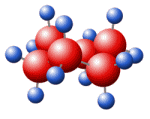


 details
details details
details details
details
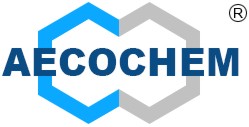
_Co_Ltd_1_575.jpg)

